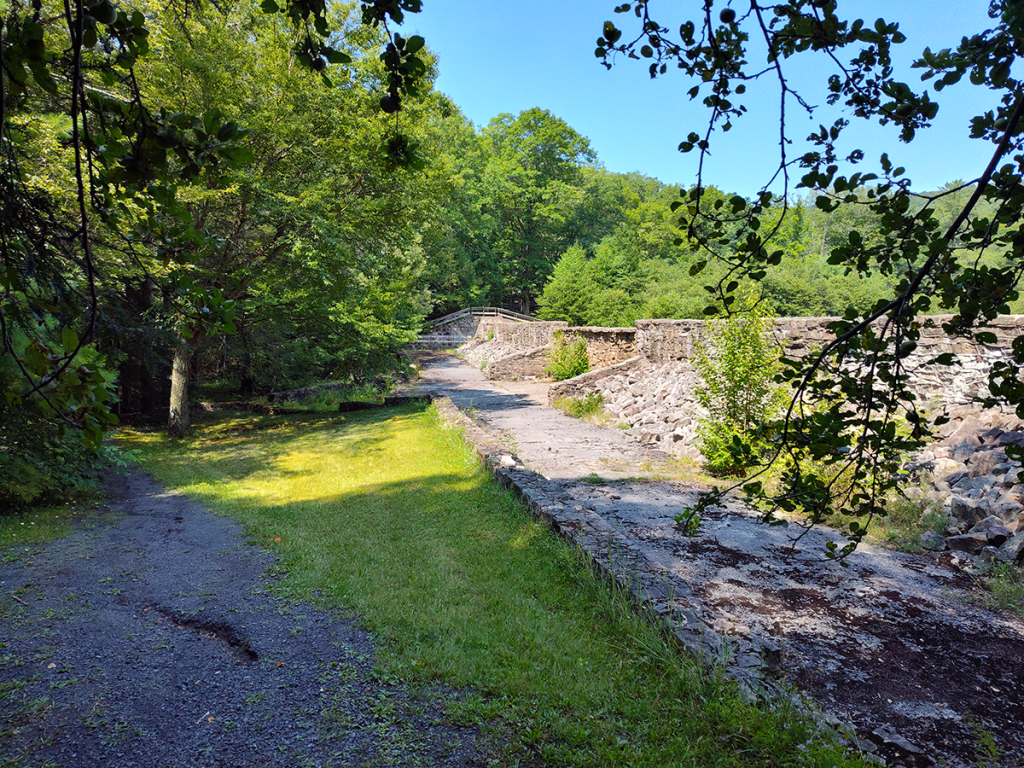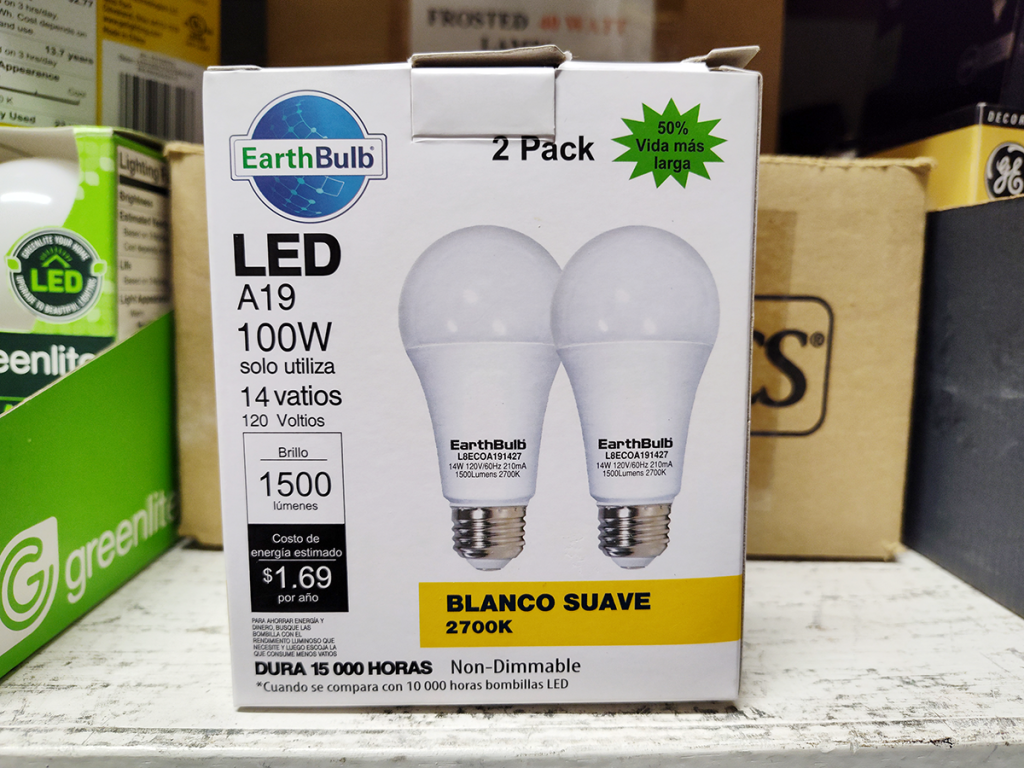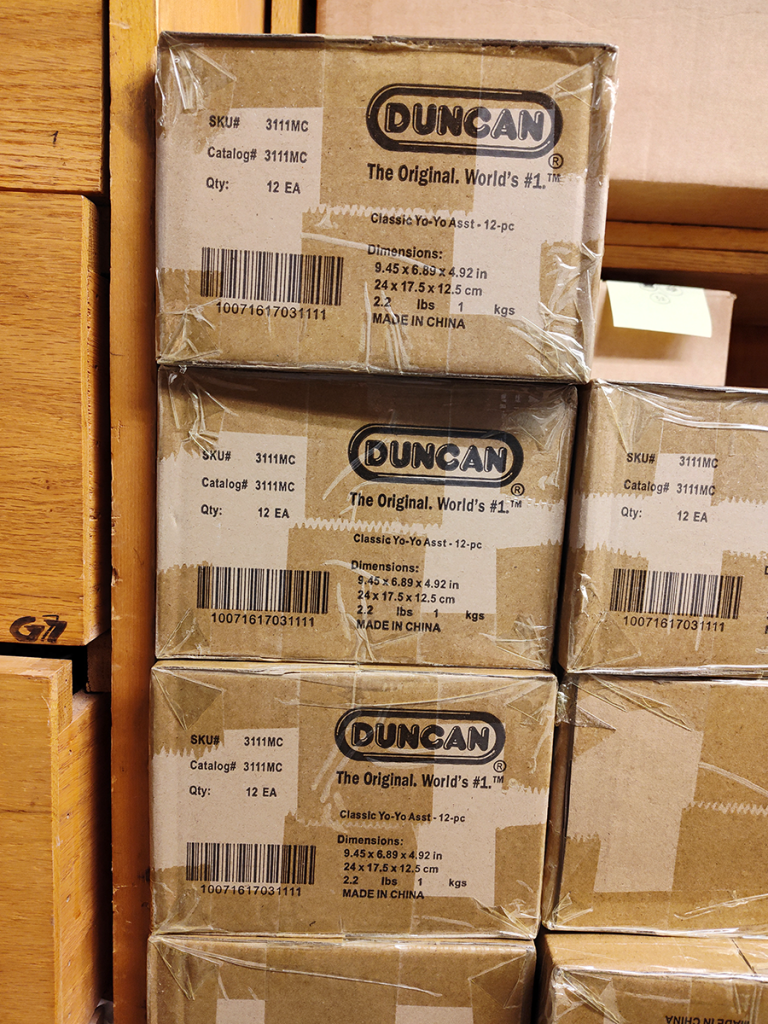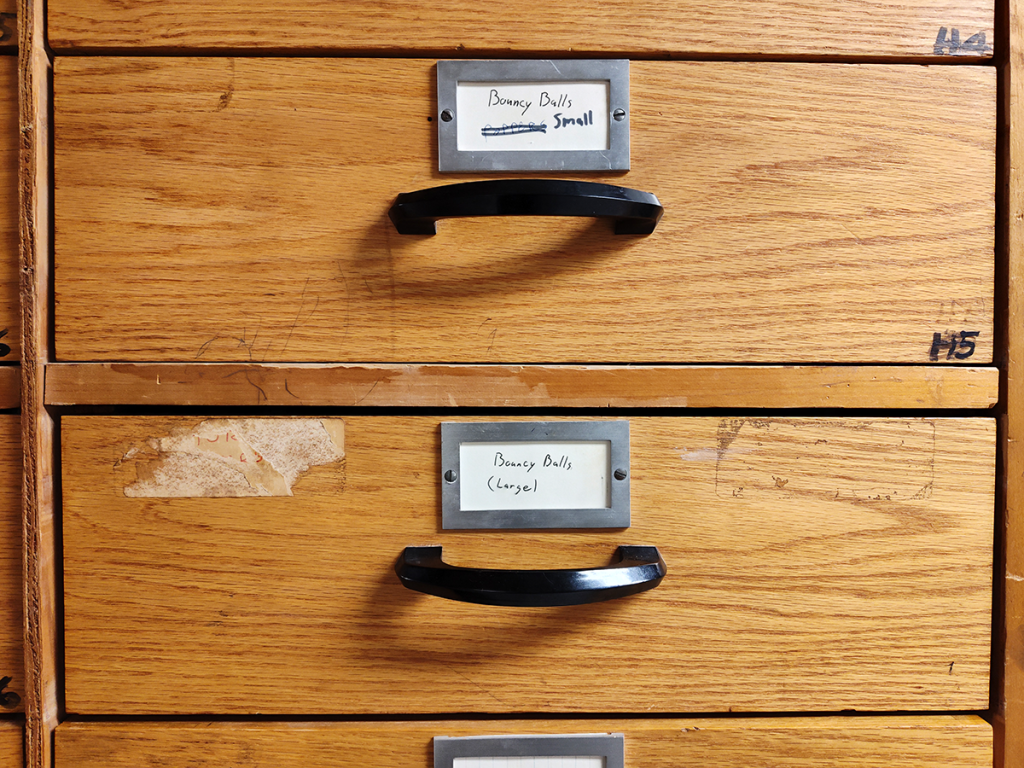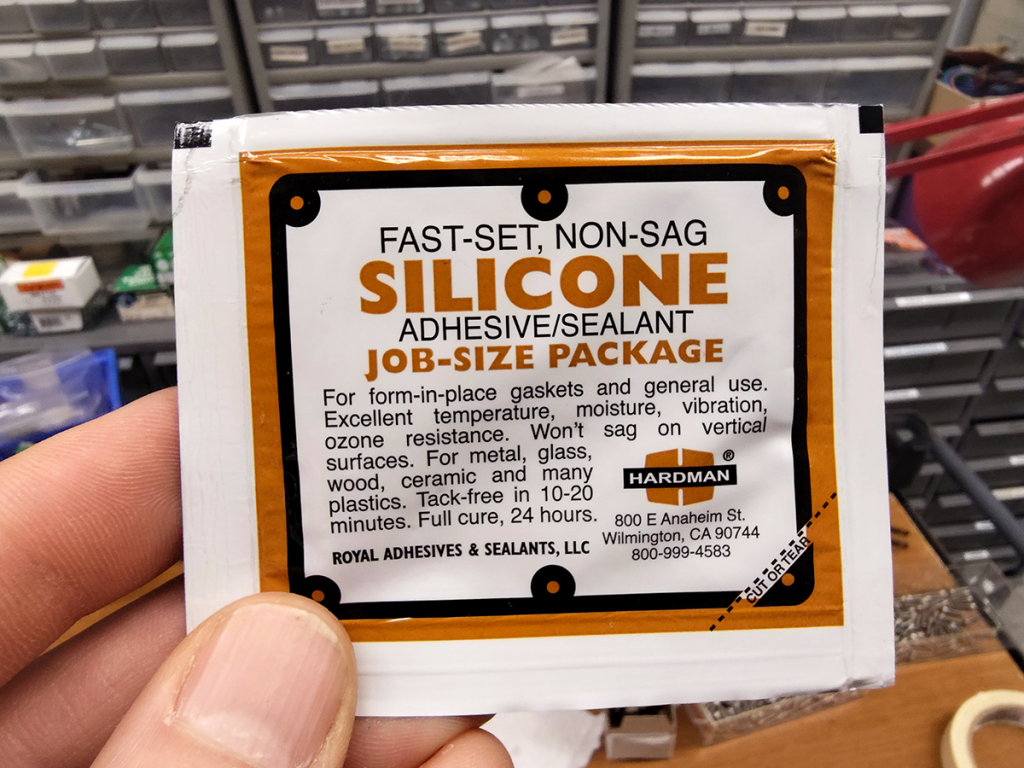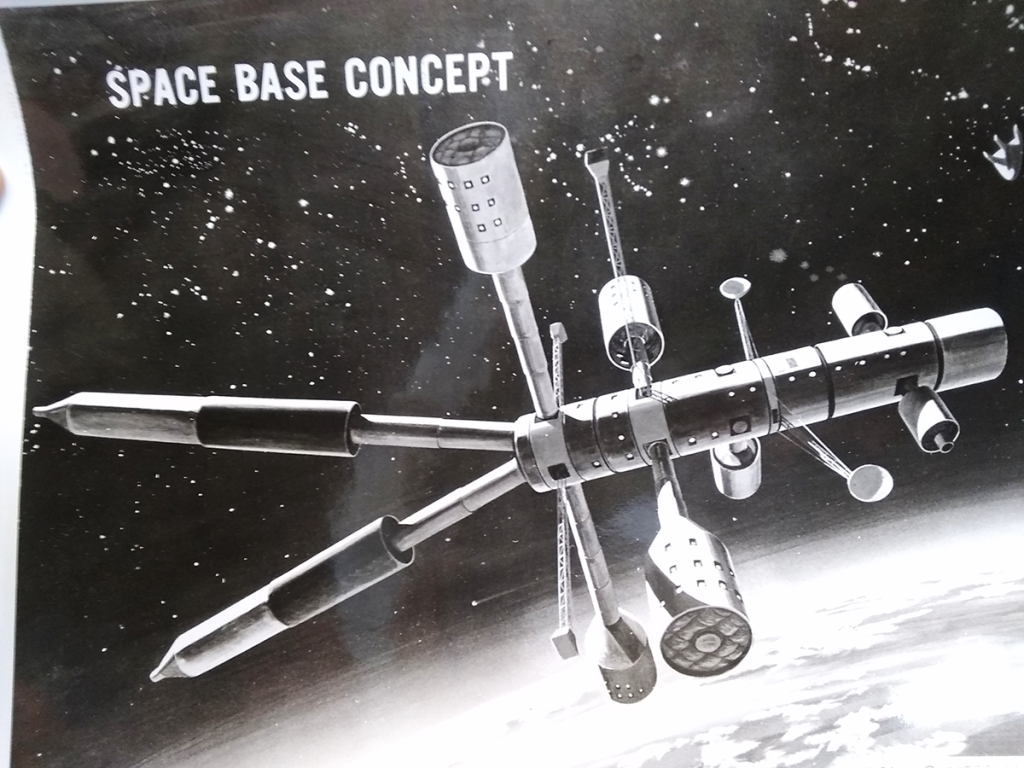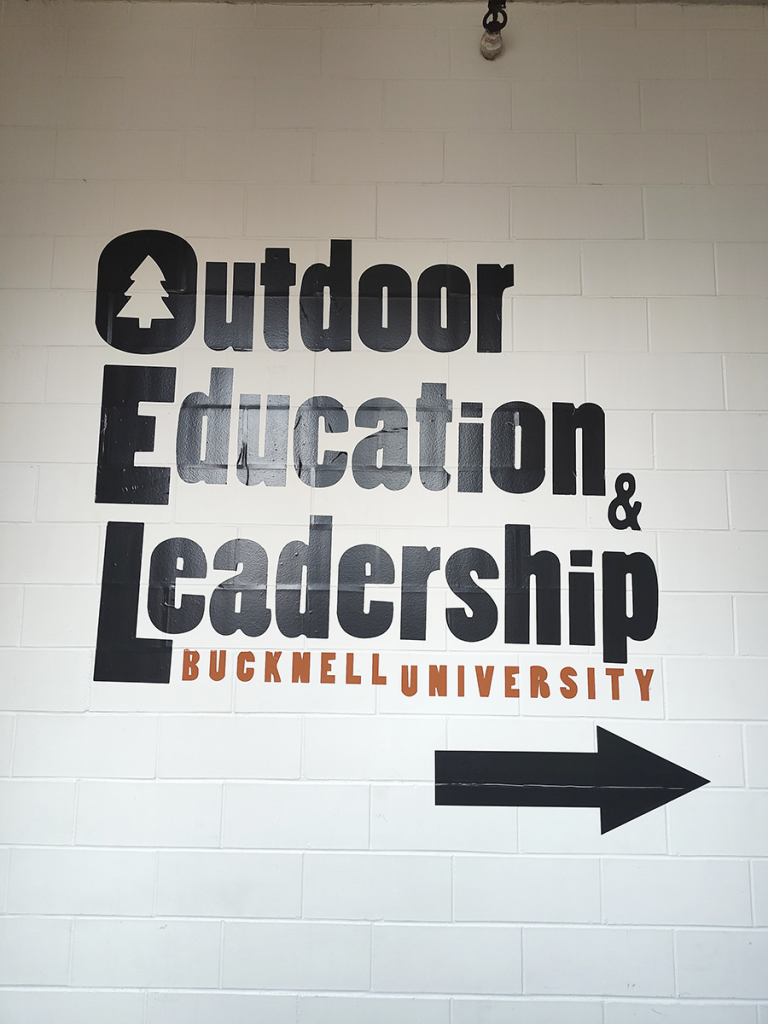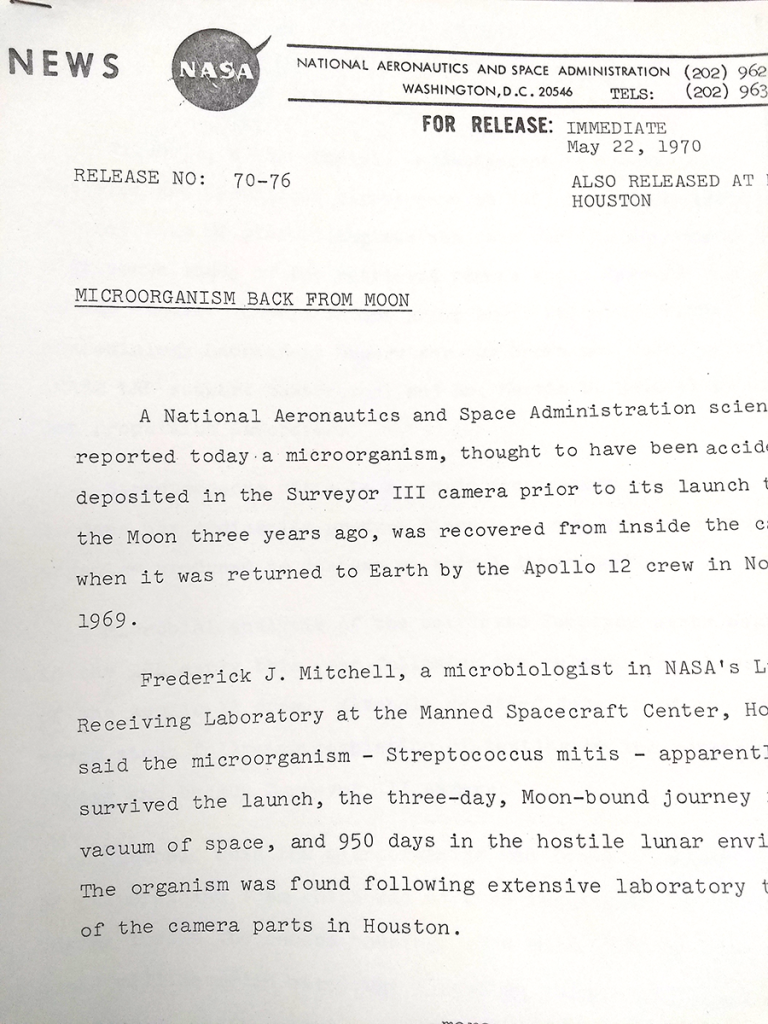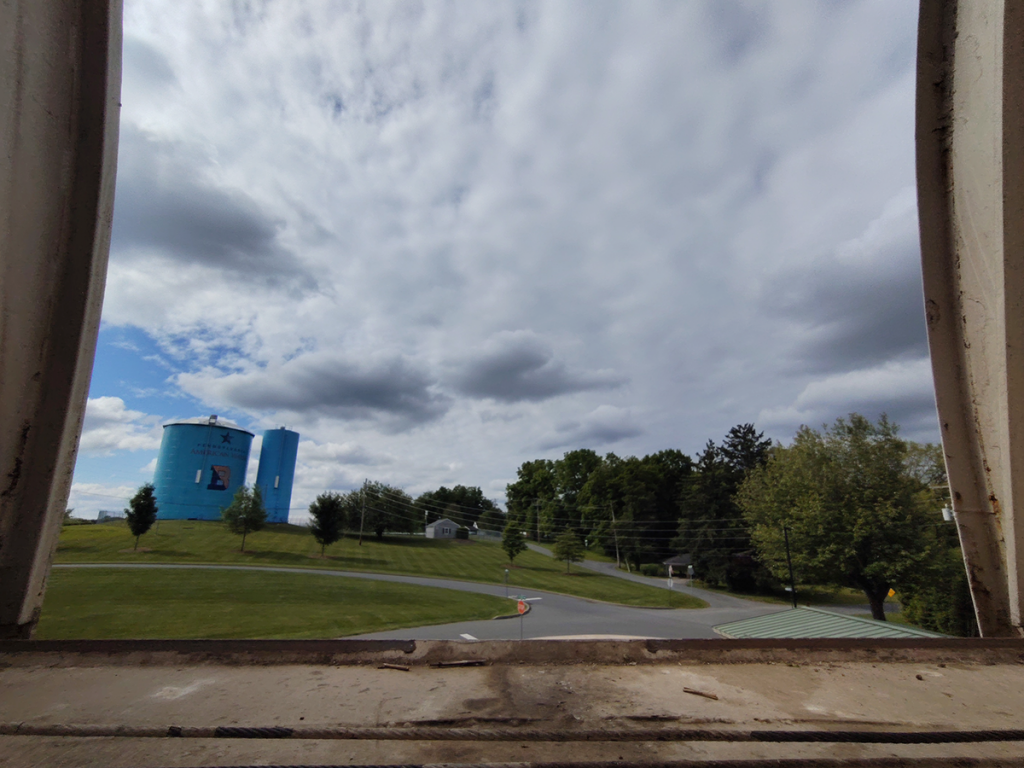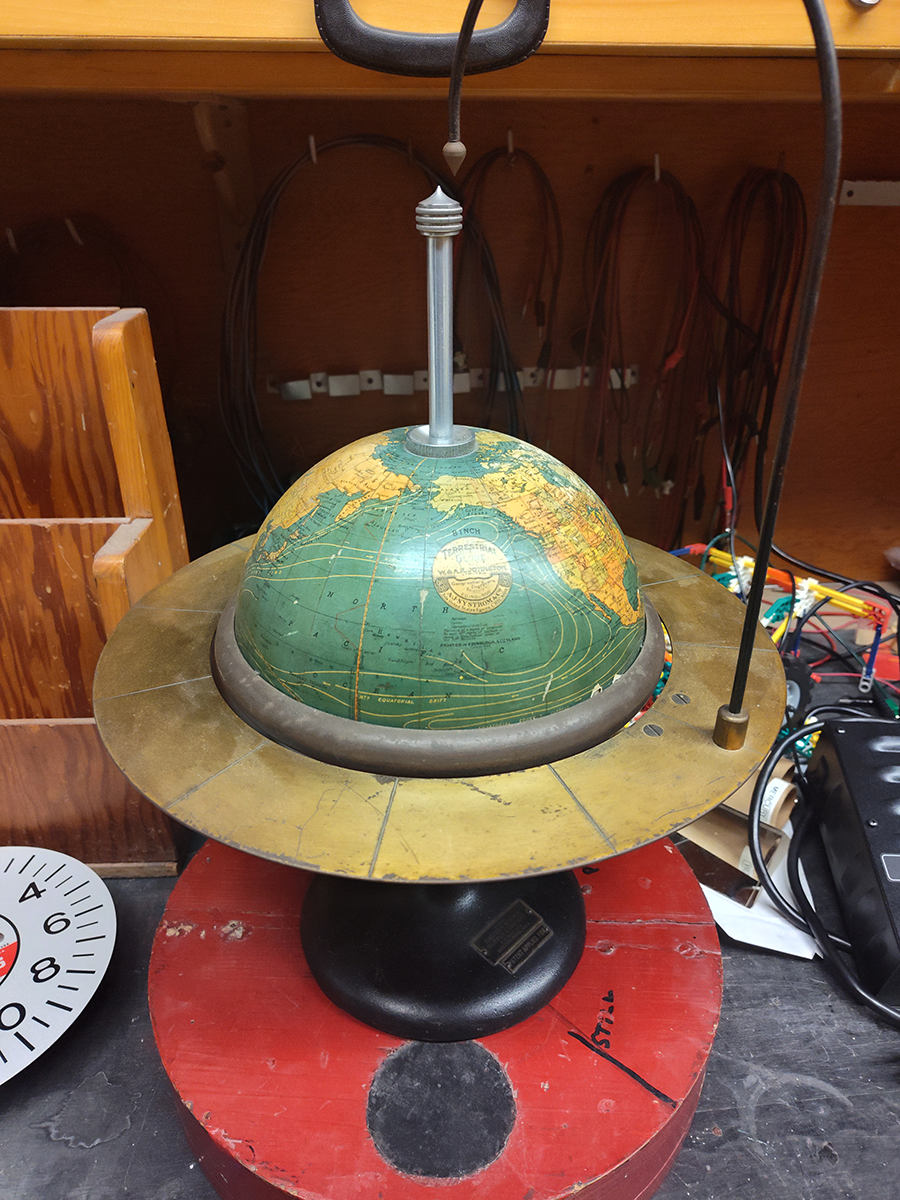
This odd-looking 8-inch globe occasionally comes out to illustrate the wobbly rotation of Earth’s precession, though it’s a pain to use and too small to see at a distance. Anymore, a gyroscope illustrates the concept more easily, so this old globe lives back in storage.
And when we say old, we mean it.
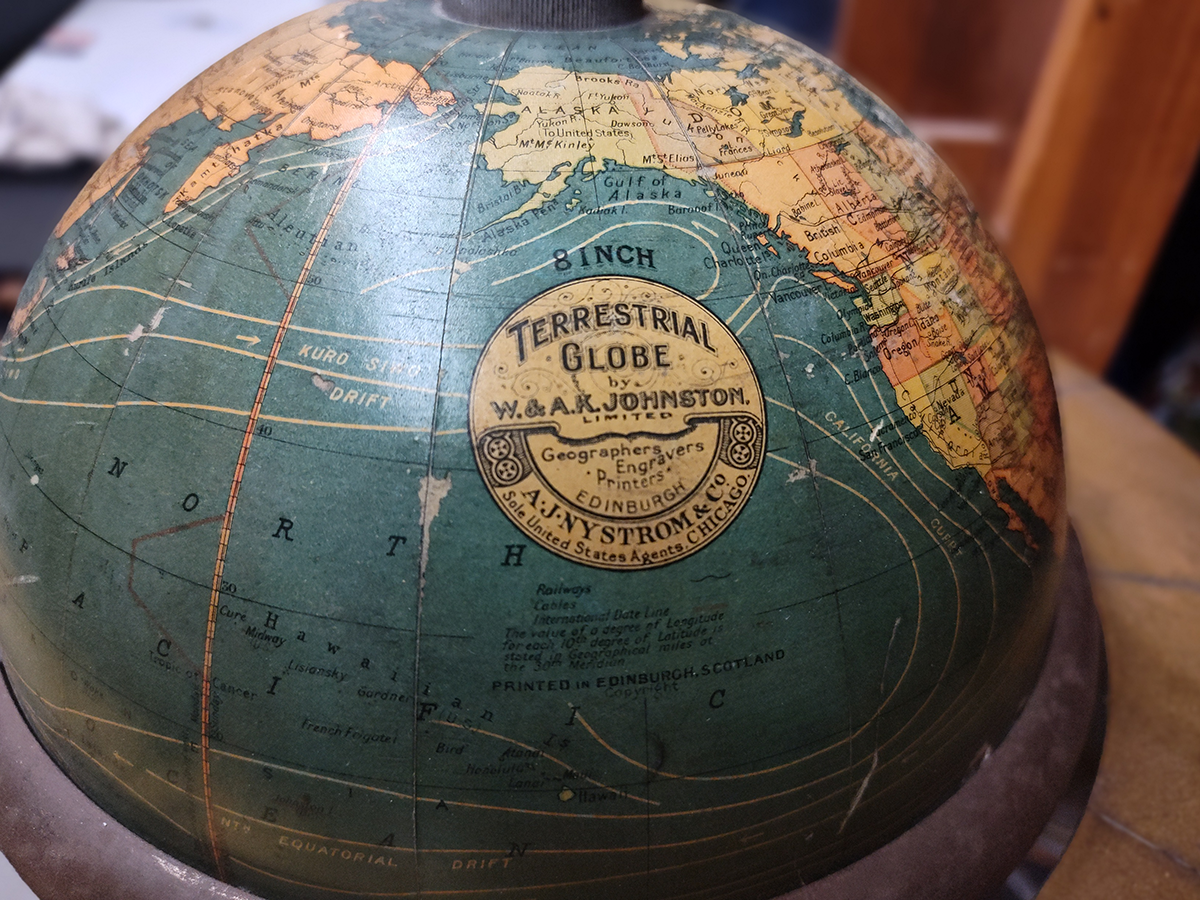
Okay, we jest about the “terrestrial globe” part. We have one moon globe around here, plenty of celestial sphere globes, including a big, fancy one also by W. & A.K. Johnston at the Observatory. If you want one of your own, an antiques dealer in Portland, OR is offering one just like ours for $6,500.
It does note copyright, but with no date. So how old could this be?
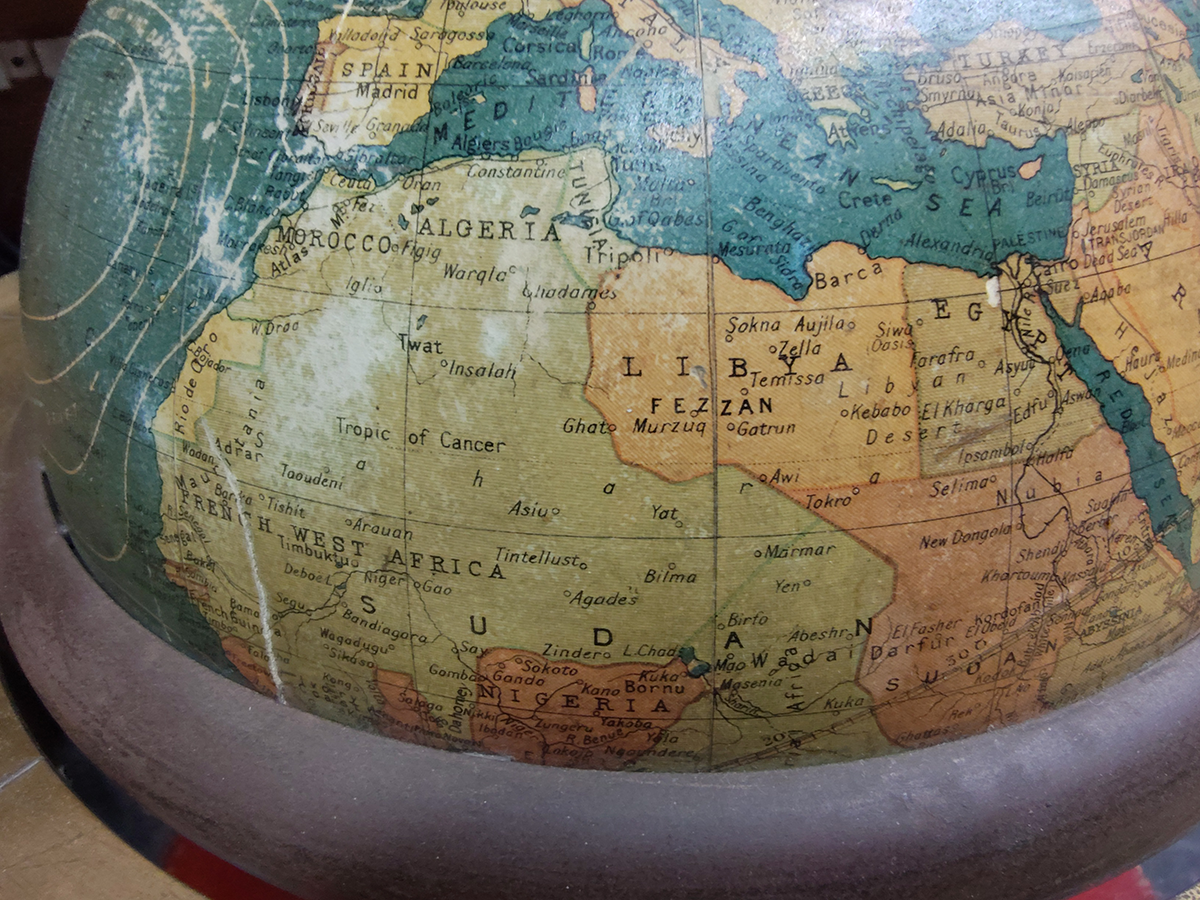
French West Africa existed from 1895 to 1958. Let’s begin with that range and see how much we can trim it down.
1895 | 1958
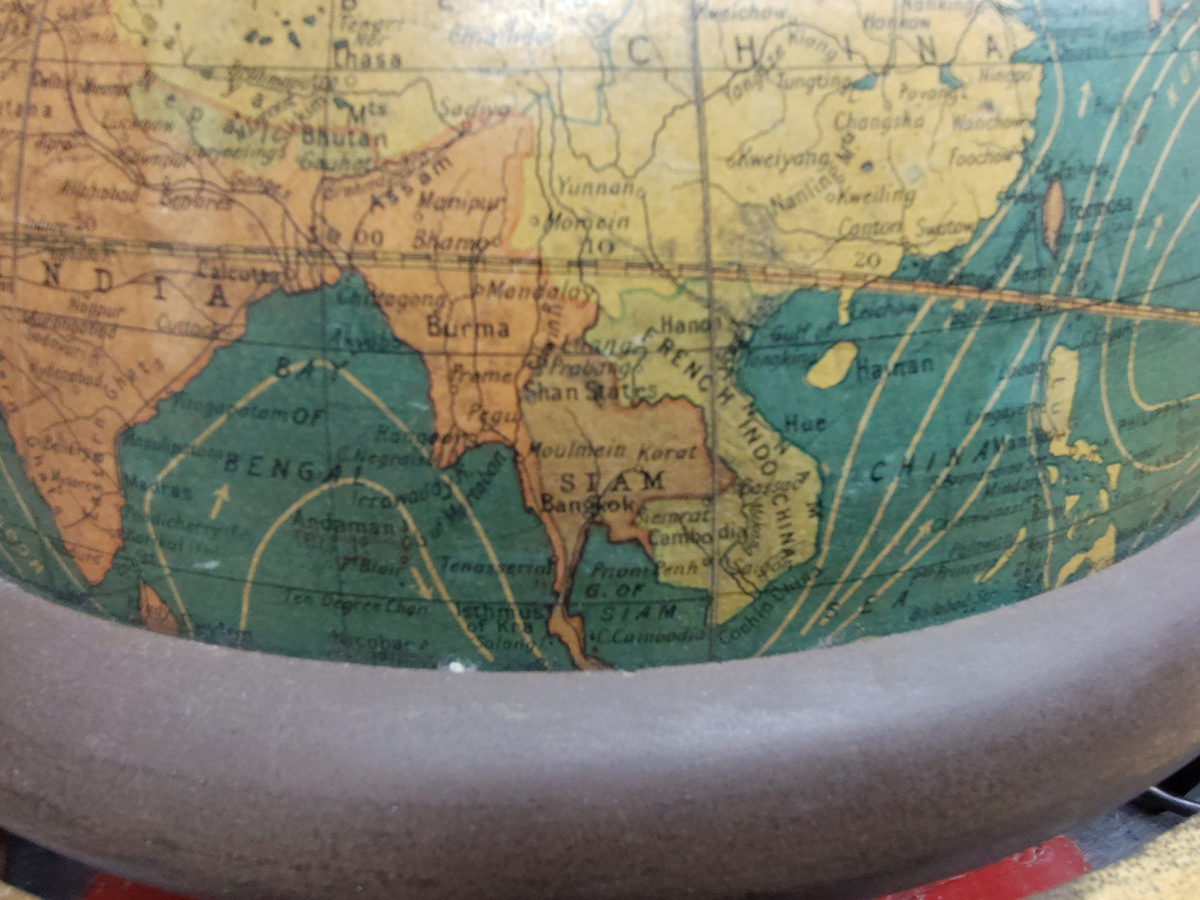
French Indochina existed from 1887 to 1954, so now we’re at:
1895 | 1954
We’re guessing that the big pinkish smear of India is the British Raj, 1858 to 1947.
1895 | 1947
Siam existed well earlier than that – argue for whatever – but changed to Thailand in 1939, so that gets us to:
1895 | 1939
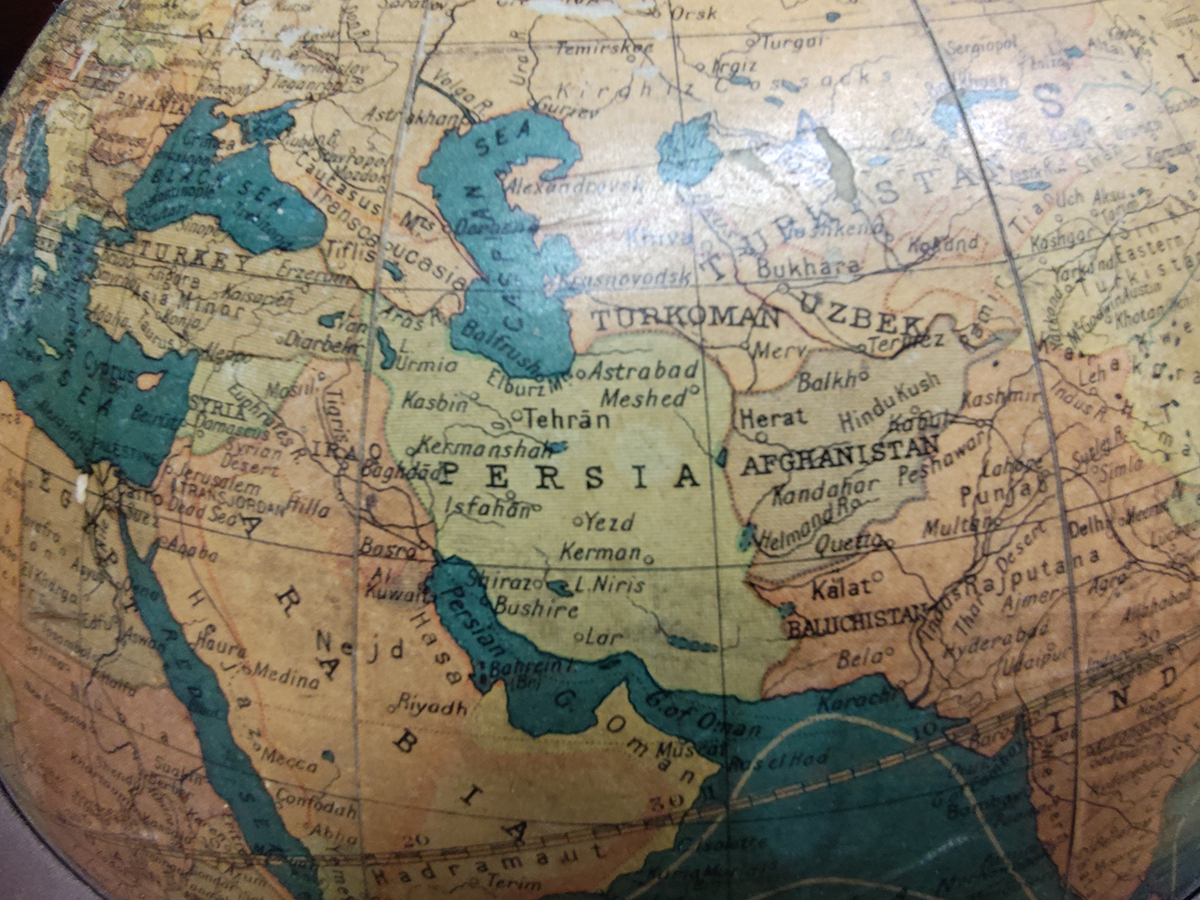
Persia brings some uncertainty, at least when used by a Scottish cartographer in the window we’re assuming, but let’s put the name change from Persia to Iran in about 1935. It’s a guess, but so is the rest of this.
1895 | 1935
Arabia is also a little vague, so we’re going to assign a range of 1902 (the return of Abdul-Aziz Al Saud and the capture of Riyadh from the Ottoman Empire) until 1930, the founding of the state of Saudi Arabia. We’re more confident about the latter date, but that’s the one that matters more.
1902 | 1930
Because we can also see Transjordan, the British-drawn territory which existed from 1921 until 1946. That further narrows our window to:
1921 | 1930
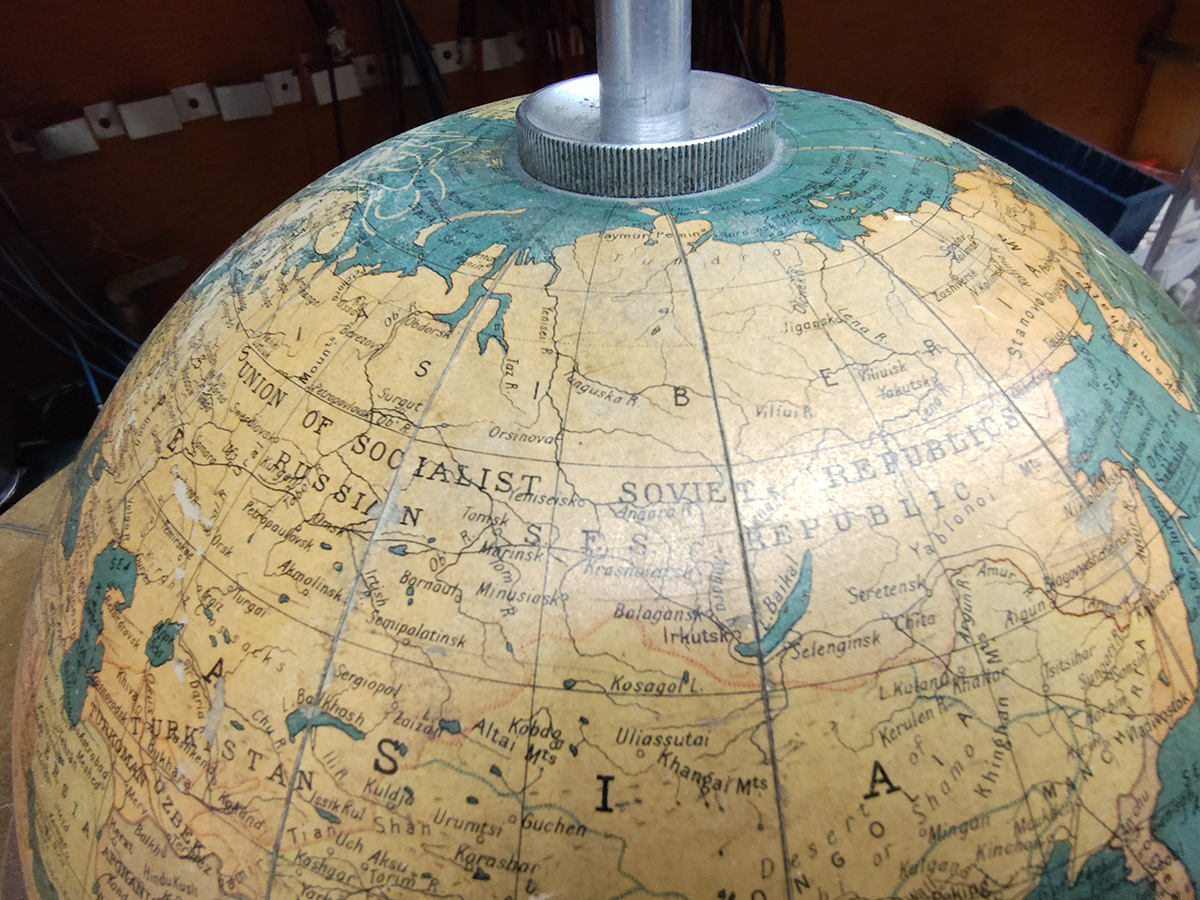
At last, we have one very big clue: the Union of Soviet Socialist Republics. Sure, we remember the fall of the Berlin Wall in 1989 and the dissolution of the U.S.S.R. in 1991, but we know the globe’s older than that. We also know, from high school history class, that the U.S.S.R. came about following the Russian Revolution, which trims our earliest date to 1922.
1922 | 1930
So, an eight-year window, making this little globe about a century old. Probably. A lot can happen in a hundred years.

